Review: The Storyteller Ghosts #2
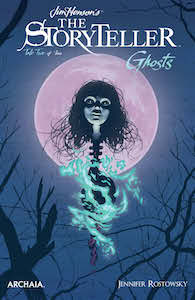
[Editor’s Note: This review may contain spoilers]
Story: Jennifer Rostowsky
Artist: Jennifer Rostowsky
Letters: Jim Campbell
Cover: Michael Walsh
Variant Cover: Jennifer Rostowsky
Spot Illustration: Sonny Liew
Reviewed by: Seth Singleton
Summary
In my review of The Storyteller Ghosts #2, a young Khmer woman turns to black magic. The spell promises to give the caster wealth, power, and beauty unlike that of any other human. But when the spell turns on Molika, she must learn to deal with the consequences of magic, and what it means to be an Ahp.
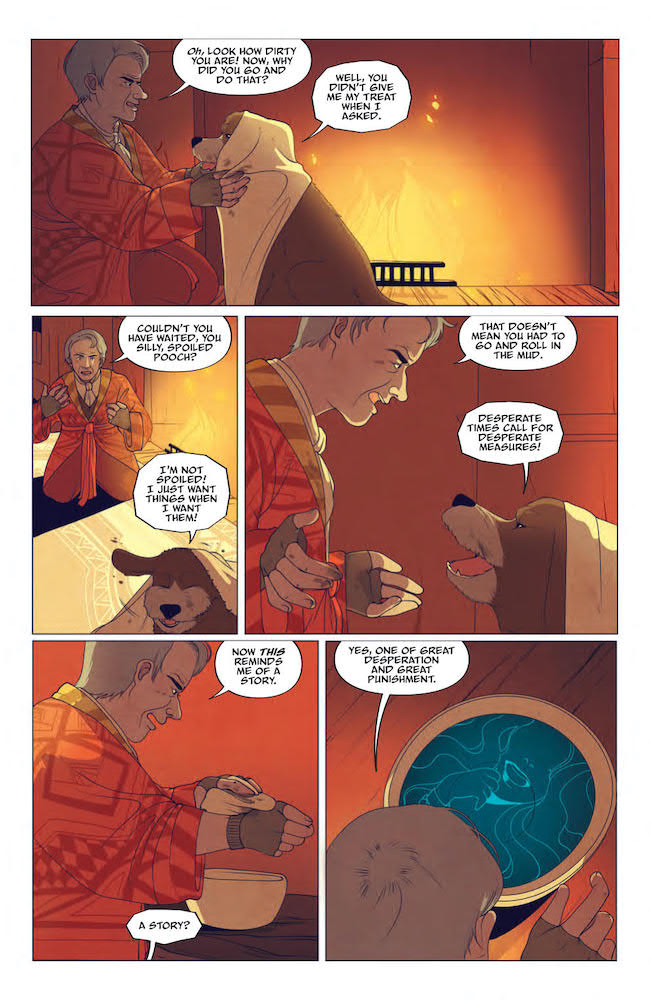
Positives — Story
The great thing about a story is when it begins with timeless elements. Two old friends. One cleaning up after the other. Grumbling and complaining the way friends will.
An older man dressed in a robe with a neck-kerchief tied like a tie, wearing fingerless mittens is drying off his dog. He is asking the dog why it wanted to go out and get all dirty. The dog answers well you didn’t give me my treat when I asked. Which reminds the old man of a story.
In the story, we learn about a character named Malika. She is spoiled and given everything she wants. Until she meets the love of her life and discovers that her heart belongs to someone else.
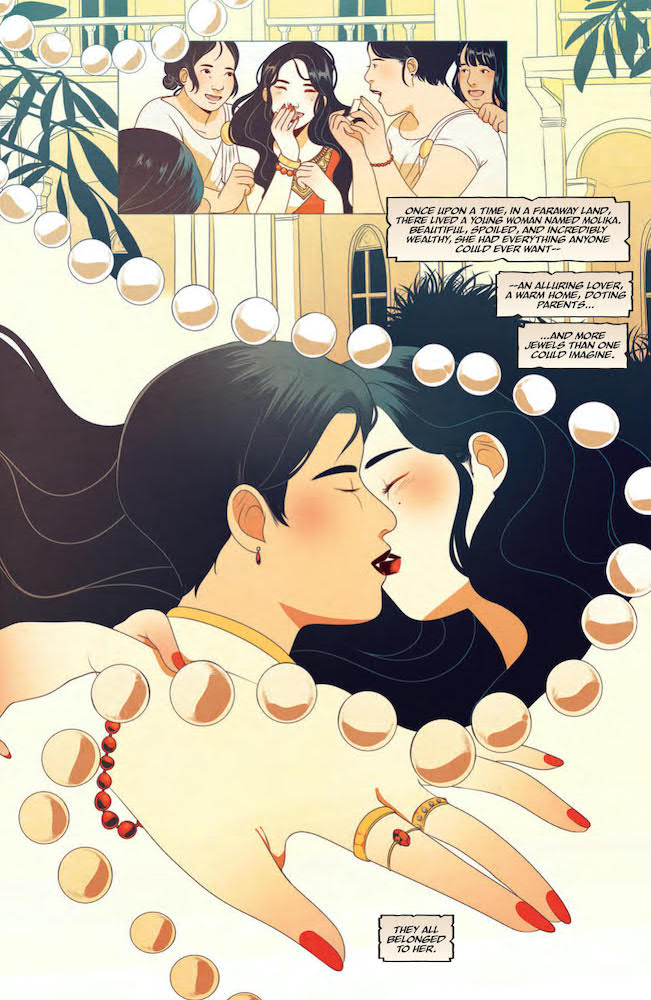
After every attempt fails she turns to black magic. Molika finds a love spell and decides that even though she doesn’t have every ingredient she can improvise. She is met with scorn by the voices of the spirits. There are many and they condemn her for being so vain as to think that gems would work as a bribe. She’s punished and the result is powerful.
Her forehead and neck are separated from her body which is left on the floor. Molika floats about as a spirit dispossessed. She is unable to communicate what has happened to the woman she loved or the woman who took her love away. The result is a curse it prevents her from ever encountering anyone who doesn’t react with fear.
A new chapter in the legacy of Aesop and other legendary parables and fables. The old man tells his dog that in the end, this girl who was beautiful and spoiled had nothing. The dog responds that it agrees but would still like to know more about that treat.
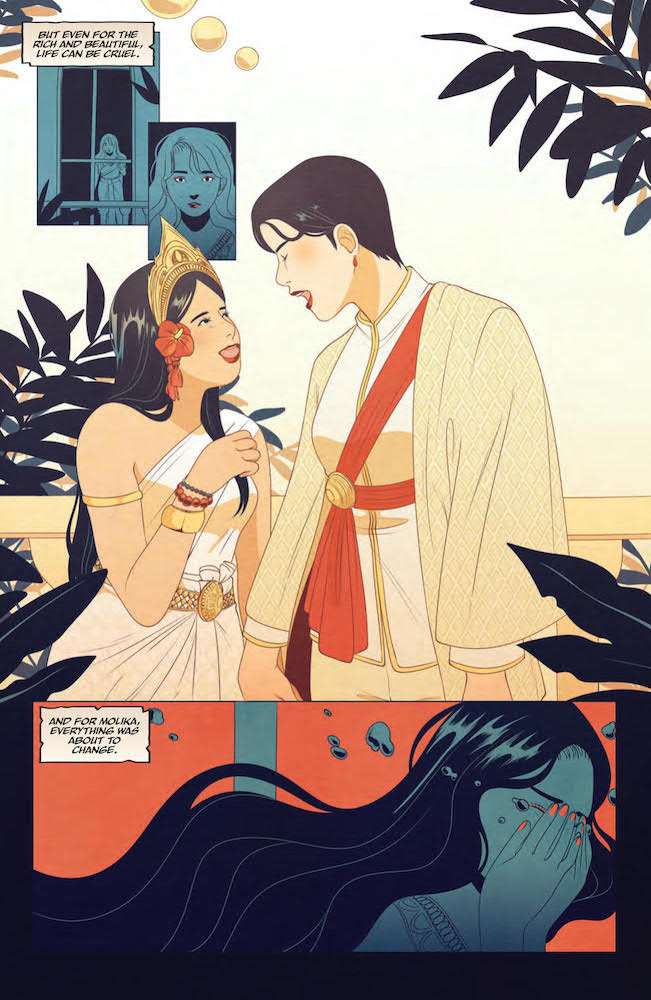
Positives — Colors
There are a series of lovely visual cues that are stunning and deserving of a closer look. One such example is a reference to the parable that has just been told. It’s a portrait hanging on the wall above the fireplace in front of which the old man sits in a chair. The dog covered by a towel lies before him. It’s a haunting visual that makes for a powerful experience. It’s a grim if not a gruesome reminder of the lessons the story is hopefully imparting to the reader or the listener.
I love the shifting pallets of colors from page to page and how they echoed the developing elements in the story. In the first few pages, the lighter panels give a dreamy wonderful quality. It soon shifts to a dark red that continues even into the sadder and more mournful periods.
This is then used to great effect to highlight a book. In this case, one that contains the dangerous spell. The red coloring is a through-line up reflecting the red like a passion or desire. When Molika is confronted by the ghost she has contacted and then condemned the pallet is changed into a series of Blues and Greys and softer hues. the palette of the colors
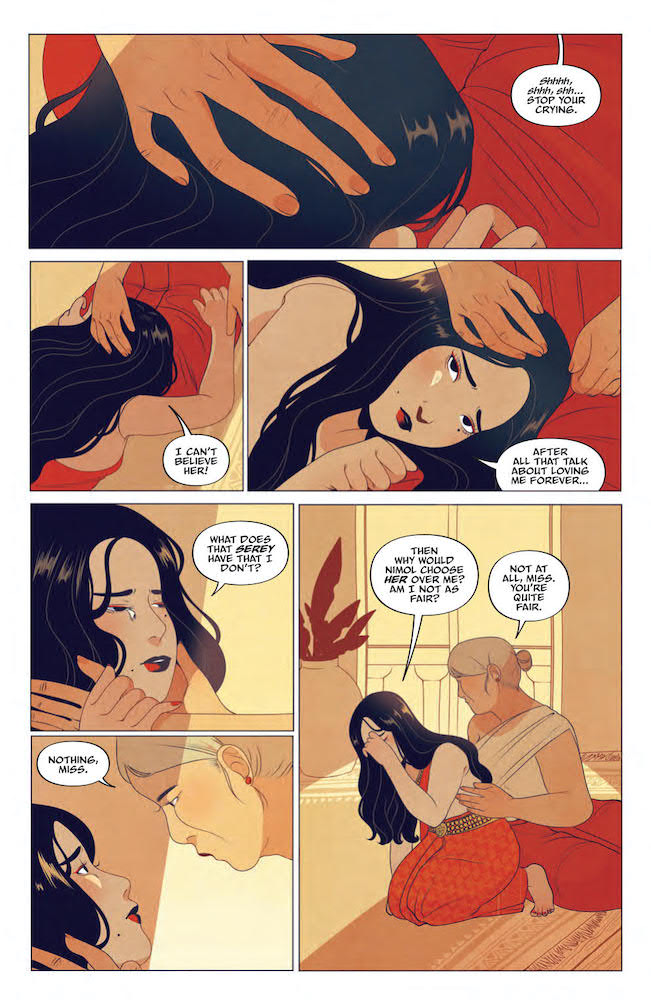
Negatives
I’m not a big fan of books that need to repeat every element of the previous issues. In order for me to enjoy a story, I only need to understand the key pieces to enjoy a singular issue. However, with this story I’m aware that it’s only the second part of a four-issue series. Keeping that in mind, it would make sense to introduce one if not both of the introductory characters. Especially after the detail paid to the main character of the parable fable.
I am not very clear on Kmer culture so when I read in a summary in Previews World that included this detail I struggled to see where that was relayed to the reader in the process telling the fable. There’s only one reference that mentions a faraway land. Nothing that mentions Kmer.
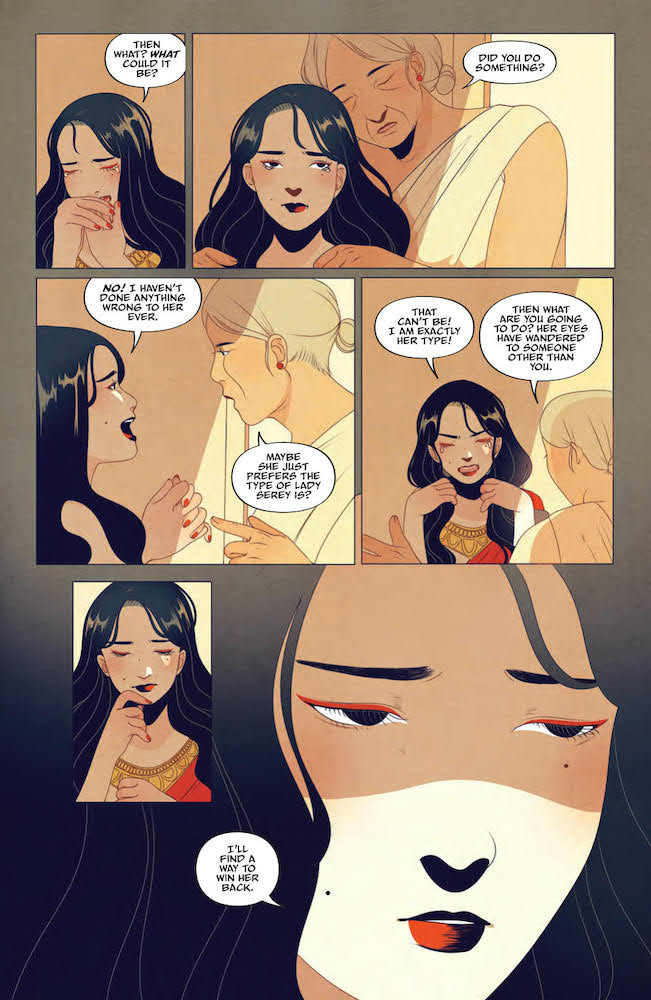
Verdict
Few things ring truer in a story or fable than a lesson about tempering one’s desire or selfishness. This story takes great advantage of the spoiled character Molika. The dangers of wanting something that exists beyond the natural world are a necessary consequence. Together it creates a scenario in which Molika’s punishment is just. While also retaining the quality of being a necessary reminder for those who still need to learn from this story’s example.
